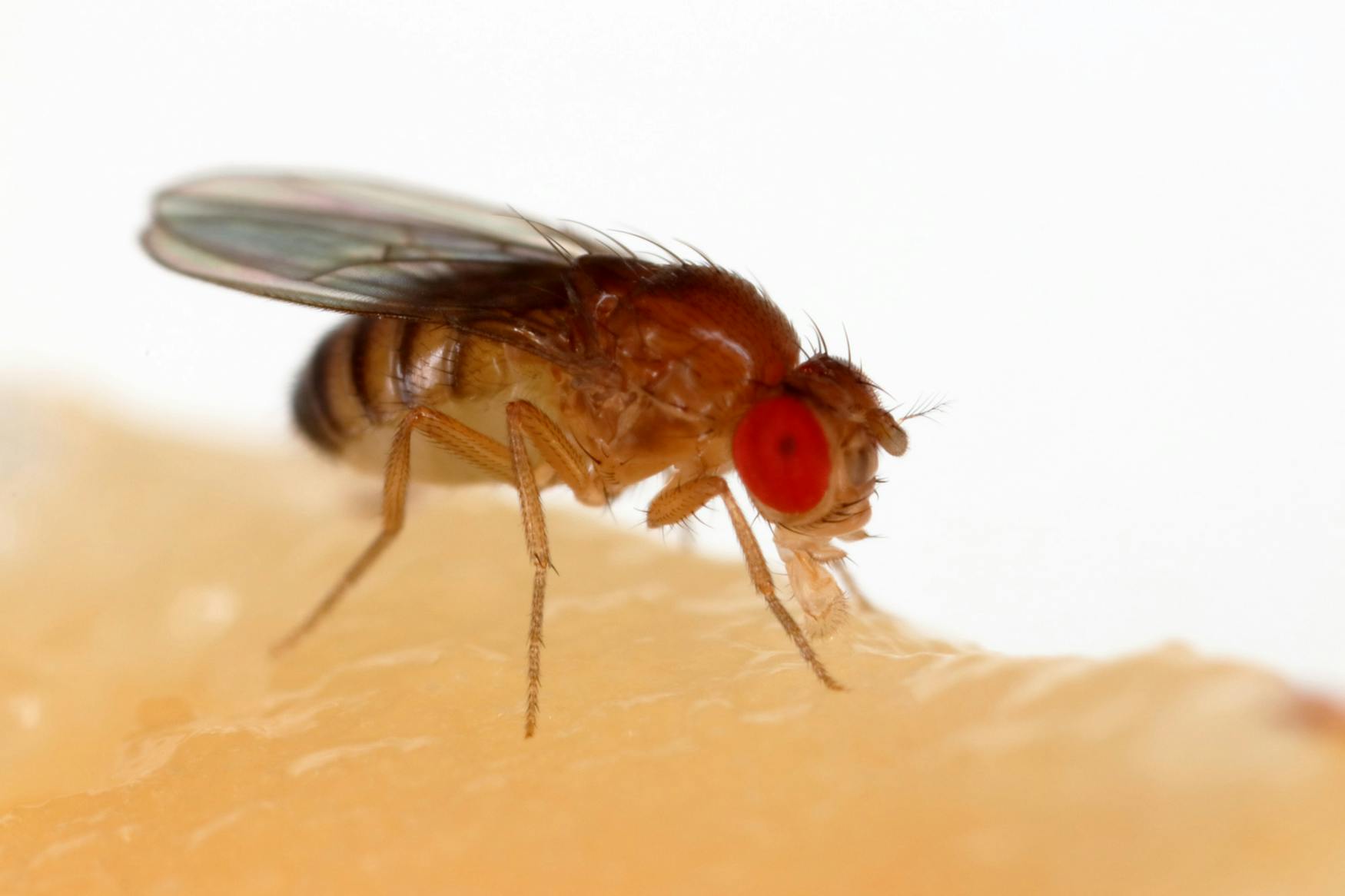Things Are About To Get Loopy
Brandeis undergraduate students explore fruit fly genetics and beyond in University labs.
For a Brandeis undergraduate, the Brandeis Core Science requirement has inevitably brought you to a classroom where the words DNA to ribonucleic acid to protein are chanted almost as a mantra. The process, as we learn it in its most basic form, flows in a straight line: step A, then step B, then step C.
For Shirley Jin ’27, a biology major and undergraduate researcher in the Kadener Lab, this process is a little more convoluted.
She studies fruit flies, which are home to a specific gene called Muscleblind. The transcription of this gene catalyzes a complicated pathway in the cell, producing two forms of RNA: one linear and one circular. The linear RNA produces a protein called Muscleblind protein. MBL promotes the synthesis of a circular RNA from the Muscleblind gene, and that circular RNA, in turn, negatively regulates the levels of linear RNA in the cell.
Unlike other genes that follow that predictable straight path, RNA molecules and the MBL protein interact in a feedback loop enabling self-regulation of the gene. Understanding this system could reveal fundamental principles of RNA regulation and that may help in curing human disease at some point in the future.
Previous research has shown that the MBL protein doesn’t act alone. Other RNA molecules within the cell also bind to the protein and influence its work. That leads us to Jin’s key research questions: Which RNAs physically bind to MBL and is MBL’s circular RNA involved in these interactions? Understanding these relationships in more detail will help reveal new roles for MBL in the cell.
Jin’s mentor, graduate student Michael Canori, set the stage for her research by conducting experiments that provided Jin with raw data to analyze. He began by extracting all cellular proteins from the heads of fruit flies — if you’re like me, don’t think about this for too long — and then isolating the protein through an abstruse-sounding process called immunoprecipitation. During this process, MBL protein is pulled out from a mix of cellular components, along with any RNAs bound to it. A round of RNA sequencing later and Jin has a raw count of how often each RNA appeared bound to the MBL protein.
This is where her work begins.
To analyze the data, Jin used the programming language R to translate RNA counts into a ranked list of RNAs most likely to interact with the MBL protein. The analysis confirmed that many RNAs bound by MBL are involved in splicing — a process in which non-coding bits of RNA are removed and the remaining coding bits rejoined — affirming MBL’s role as an RNA-processing protein.
However, other RNAs that were found were associated with RNA regulation, metabolic processes, and cellular organization. By spotting which RNAs most abundantly found bound to MBL, Jin is mapping out the possible ways in which RNA molecules participate, alongside MBL, in the regulation of cellular machinery.
Jin described the project as “exploratory,” with no single result representing a definitive answer. Instead, it provides a broad map of RNAs that MBL regulates throughout the cell.
While Jin’s work focused primarily on linear RNAs bound to MBL, circular RNAs are also an important area she hopes to study in the future. As its name explains, circular RNAs are RNA molecules that exist in a circular shape, making them more stable than their linear counterpart. Moving forward, Jin plans to investigate what role Muscleblind’s circular RNA product plays in cellular function, beyond regulating its own gene expression.
For a process that seemed so straightforward before, Jin’s research reveals that these pathways are more complicated than what first meets the eye. By identifying the RNAs that bind MBL, she is uncovering new ways MBL functions in the fly and what role Muscleblind’s circular RNA product plays in the cell.
“There’s always more to look into,” she said.
Moreover, this research holds the possibility of having near-term impact. Muscleblind has a human counterpart, and misregulation of this gene causes myotonic dystrophy, a disorder affecting muscles and the nervous system. Studying the fly system provides a simpler model to explore fundamental questions about RNA regulation and protein interactions, which can then inform research on human genes.



Please note All comments are eligible for publication in The Justice.